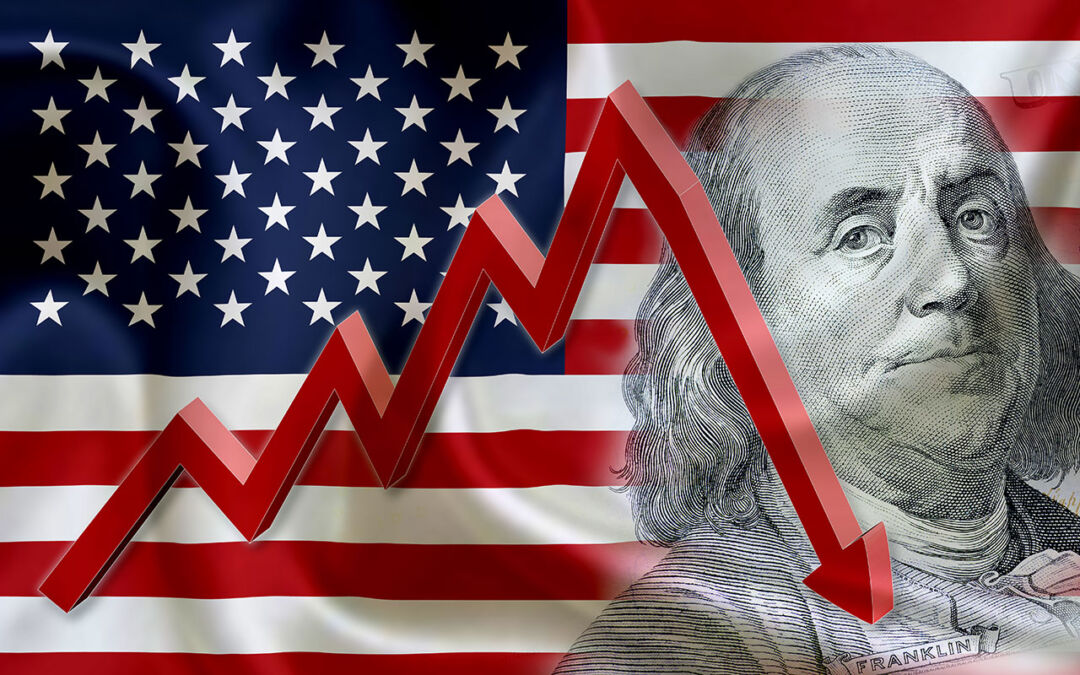
Recession Odds Climb to 39 Percent as Trade War Escalates and Tariffs Hit Critical Sectors
Tariff Turmoil and Recession Fears: Unraveling the High-Stakes U.S.-China Trade War
The U.S.-China trade conflict has entered a dangerous new phase as tariff escalations reach unprecedented levels and market volatility deepens global economic uncertainty. With President Trump’s administration intensifying tariff measures, industry analysts and market strategists are preparing for the possibility of a recession that could alter the landscape of international trade and investment. This comprehensive report delves into the unfolding trade war, exploring the opposing forecasts and assessing what the future might hold for a global economy already under strain.

The average probability of a U.S. recession, based on leading forecasts from major financial institutions and economic models, now stands at approximately 39.25%. This figure reflects a blend of both cautious optimism and growing concern, with projections ranging from 27% to 60%, depending on assumptions about tariffs, trade policy uncertainty, and macroeconomic fundamentals. While institutions like J.P. Morgan warn of elevated risks due to the escalating trade war, others such as YCharts and S&P Global suggest more moderate odds, citing mixed signals from economic indicators. This average underscores the prevailing market unease: while a recession is not a foregone conclusion, the risks are significantly elevated compared to previous years.
Table: Latest Major Economic Recession Probability Predictions (2025–2026)
| Source/Model | Probability (%) | Timeframe | Key Drivers/Notes |
|---|---|---|---|
| J.P. Morgan | 60 | End of 2025 | Tariffs, trade policy, business sentiment |
| S&P Global | 30–35 | Next 12 months | Tariffs, weaker fundamentals |
| Goldman Sachs | 35 | Next 12 months | Trade war, inflation, weak growth |
| Morningstar | 40–50 | Next year | Tariffs maintained |
| YCharts (Estrella-Mishkin) | 27.01 | Feb 2026 | Model-based, recent decline from last year |
| Bankrate (Economist Survey) | 36 | By Mar 2026 | Consensus, interest rates |
A Brewing Economic Storm: The Recession Debate
The central question facing policymakers and traders is whether escalating tariffs will lead the United States—and by extension, the global economy—into a recession. Proponents of the recession forecast argue that the steep tariff increases, now reaching an effective rate of 145% on Chinese imports, could dramatically escalate production costs, trigger inflationary pressures, and depress economic growth.
Timeline showing the escalation of U.S. effective tariff rates on Chinese imports.
| Date | Effective U.S. Tariff Rate on Chinese Imports | Key Event/Action |
|---|---|---|
| Feb 2020 | 19.3% | Post-"Phase One" agreement, tariffs remain elevated |
| Jan 2025 | 20.8% | Start of second Trump administration, tariffs unchanged |
| Feb 4, 2025 | 30% | 10% baseline tariff imposed citing fentanyl exports (IEEPA) |
| Mar 4, 2025 | 40% | Additional 10% tariff imposed |
| Apr 2, 2025 | 54% | 34% "reciprocal" tariff announced (added to existing 20%) |
| Apr 5, 2025 | 54% | 10% universal minimum tariff takes effect (no change for China) |
| Apr 9, 2025 | 145% | Reciprocal tariff rate raised to 125%, total effective rate 145% (20% existing + 125% new) |
| Apr 10, 2025 | 145% | White House confirms 145% effective rate; some electronics exempted April 12 |
Economic Downturn Forecasts
Critics warn of several immediate and long-term economic pitfalls:
- Inflation Surge and Cost Pressures: Tariff-induced cost increases in pivotal industries, such as electronics and automotive manufacturing, are projected to drive U.S. inflation above 4%, an increase from current levels around 2.8%. This escalation is expected to bite into consumer spending and overall economic stability.
- Job Losses and Investment Declines: Historical data, including the 245,000 job losses seen during the 2018 trade dispute, underscores fears that broader tariffs could exacerbate unemployment figures and dampen real investment. Some models now predict a potential 2.6% drop in real GDP alongside a 6.6% cut in real investment.
- Long-Term Economic Weakness: Even under scenarios where tariff pressures ease temporarily, forecasts indicate a persistent annual decline in real consumption by approximately 1.2% from 2025 through 2040, suggesting long-lasting effects on economic dynamism.
- Stagflation Concerns: The convergence of rising prices, slowed growth, and growing unemployment has sparked fears that the U.S. might slip into stagflation—a scenario that has historically proven difficult to reverse.
Stagflation describes an economic condition marked by a combination of slow economic growth, high unemployment (stagnation), and simultaneously rising prices (inflation). It presents a challenging scenario because typical solutions for inflation can worsen unemployment, and policies to boost growth might fuel further inflation.
A senior market strategist cautioned, “The current tariff levels set off a cascade effect on various economic sectors, and the risk of sustained downturns is real if policy uncertainties continue.” Such perspectives are echoed by prominent institutions; major financial houses, including projections by JPMorgan and Goldman Sachs, now list recession probabilities with significantly heightened confidence.
Countervailing Voices: Optimism Amid Trade Tensions
In contrast, some policymakers and business leaders maintain that the U.S. economy retains an inherent resilience that could mitigate the shockwaves from aggressive tariff policies.
Resilience and Strategic Opportunities
Advocates of the non-recession narrative point to several pillars of economic strength:
- Robust Labor and Consumer Markets: Despite tariff pressures, the U.S. labor market has shown tenacity, with employment figures remaining robust and wages strong enough to sustain consumer spending. One anonymous trade expert remarked that “historical precedents suggest that while trade shocks create short-term disruptions, the underlying economic fundamentals can drive a swift recovery.” U.S. labor market trends: unemployment rate over recent years.
| Month/Year | Unemployment Rate (%) | Nonfarm Payroll Change (Thousands) | Source |
|---|---|---|---|
| March 2025 | 4.2% | +228 | U.S. Bureau of Labor Statistics (BLS) |
| February 2025 | 4.1% | +117 (revised) | U.S. Bureau of Labor Statistics (BLS) |
| January 2025 | 4.0% | +111 (revised) | U.S. Bureau of Labor Statistics (BLS) |
| December 2024 | 4.1% | +323 (revised) | U.S. Bureau of Labor Statistics (BLS) |
- Potential Upside from Tariffs: Tariffs, while initially disruptive, are also seen as tools for long-term trade negotiations. The administration estimates that federal revenue could increase by an estimated $2.2 trillion over the coming decade—a resource that could be funneled into strategic investments. Moreover, some view tariffs as a catalyst for revitalizing domestic manufacturing by reducing the country's dependence on foreign supply chains.

Modern U.S. manufacturing facility, potentially representing reshoring efforts spurred by trade policies. (washingtonmonthly.com) - Policy Flexibility: With recent moves to pause or soften tariffs on automotive imports and several non-critical sectors, there is evidence that policymakers are responsive. This flexibility, combined with possible adjustments in monetary policy by the Federal Reserve, might cushion the economy against severe shocks.
A notable trade observer, preferring to remain unnamed, highlighted the potential benefits: “While the immediate implications of high tariffs are concerning, adjustments in policy and business strategies can transform these challenges into opportunities for reshoring and innovation.”
Escalating the Conflict: New Frontiers in Tariff Warfare
Ramp-Up on Chinese Imports
In a dramatic escalation, President Trump’s administration raised tariffs on Chinese imports to 145% last week—a move preceded by incremental increases from 104% and 125%. In a swift retaliatory counter, Chinese authorities implemented a 125% tariff on U.S. goods, effectively crippling American export competitiveness in China. This tit-for-tat escalation has not only unsettled global stock markets but has also unsettled investors who fear that such titanic trade barriers could disrupt entire supply chains.
Expansion into Critical Sectors
On April 15, 2025, in a move that drew sharp attention from technology and pharmaceutical industries, the U.S. announced new tariffs targeting semiconductors and pharmaceutical products. Once shielded by previous exemptions, these sectors now fall under national security investigations. The repercussions are profound:
- Technological Investment Surge: In a counter-response, industry giant Nvidia announced a staggering $500 billion investment in U.S.-based artificial intelligence supercomputing infrastructure, signaling both a strategic realignment and a vote of confidence in the domestic tech ecosystem.
- Global Supply Chain Volatility: The ripple effects are expected to touch nearly every sector that depends on global supply networks, creating an atmosphere of uncertainty for businesses worldwide.
Temporary Relief and International Negotiations
Selective Tariff Easing
To manage the burgeoning crisis, the administration has introduced temporary relief measures for certain sectors. For instance, car manufacturers have been offered a reprieve with proposed pauses on tariffs affecting automotive imports—a maneuver designed to provide essential time for supply chain adjustments.
Moreover, most U.S. trading partners have received a 90-day suspension or a reduction to a 10% "reciprocal" tariff, contrasting sharply with the severe measures against China. These adjustments aim to stabilize international markets and forestall a broader economic decline, although negotiations continue amid ongoing global market tumult.
Non-Tariff Retaliation and Agricultural Impact
The Chinese response extends beyond tariffs. Non-tariff barriers, such as the refusal to grant export licenses for U.S. meatpacking plants and raising regulatory hurdles for American agricultural exports, have exacerbated tensions. U.S. farmers, meanwhile, face significant uncertainty with the abrupt drying up of sorghum exports to China, though some are betting on a longer-term recovery and potential government support.

An unnamed government official noted, “These protective measures by China are a double-edged sword. They not only harm U.S. exports but also force our domestic stakeholders to rethink strategies in an unpredictable market.”
The Road Ahead: Implications for Global Markets
With the U.S.-China trade war intensifying, the stakes are high for both national and global economies. Professional traders are advised to monitor several key developments:
- Market Adaptations: Rapid shifts in industrial strategies, such as accelerated reshoring initiatives and supply chain realignments, could redefine global production networks.
- Policy Evolutions: Ongoing negotiations and potential policy recalibrations will likely play a crucial role in determining whether the economic fallout is contained or if recessionary pressures mount.
- Long-Term Strategic Investments: The surge of capital into domestic technology and infrastructure signals a shifting economic paradigm that, despite short-term turbulence, might foster a stronger, more self-reliant industrial base in the coming decades.
A Crossroads for Trade and Economic Policy
As the world watches, the escalating tariff conflict stands as a fulcrum—poised to swing the U.S. economy and its global trading partners into a new era of uncertainty or opportunity. While some fear that the harsh economic adjustments could precipitate a recession marked by prolonged declines in investment and consumer spending, others remain cautiously optimistic about the resilience of domestic markets and the potential for strategic realignments to fortify long-term growth.
For professional traders and policymakers alike, the situation demands acute attention and nimble decision-making. Whether the current storm will subside or solidify into a prolonged economic downturn remains to be seen, but one certainty prevails: the coming months will be critical in shaping the future contours of global trade and economic policy.